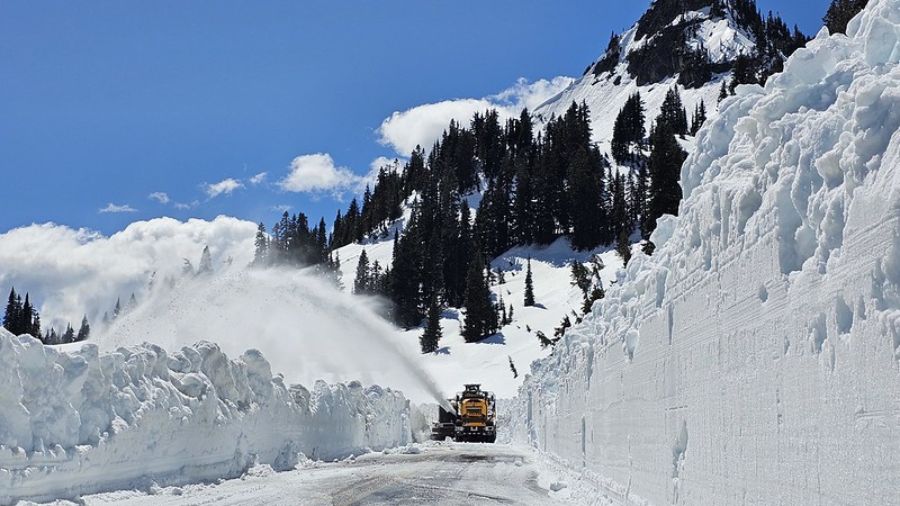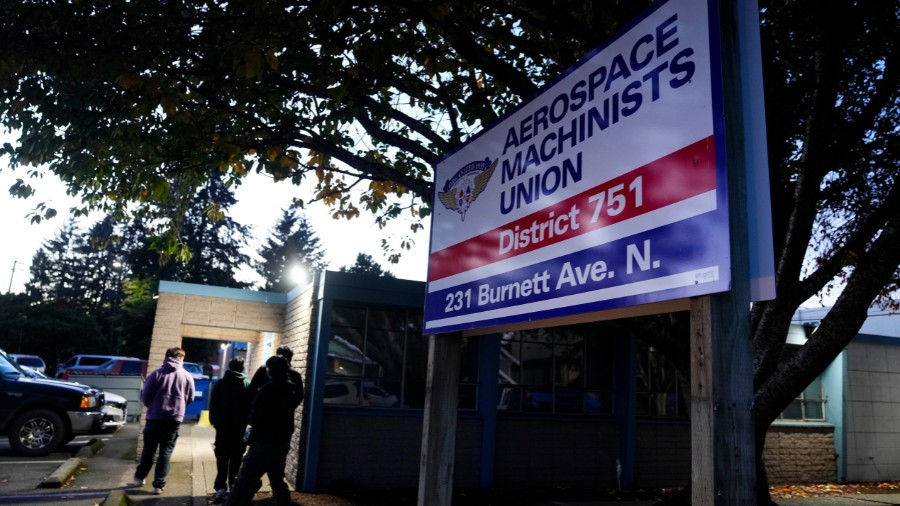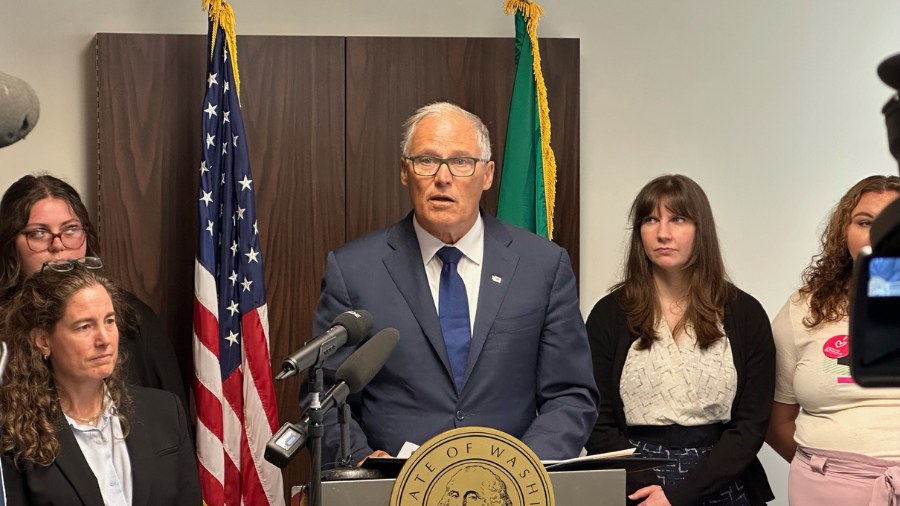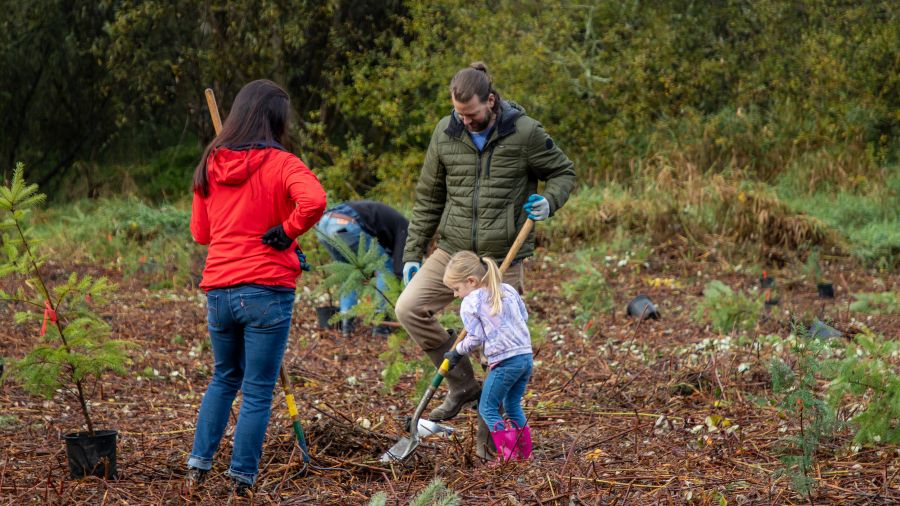Forgotten film reveals critical wartime role for Washington industry
Oct 25, 2023, 9:40 AM | Updated: 12:14 pm
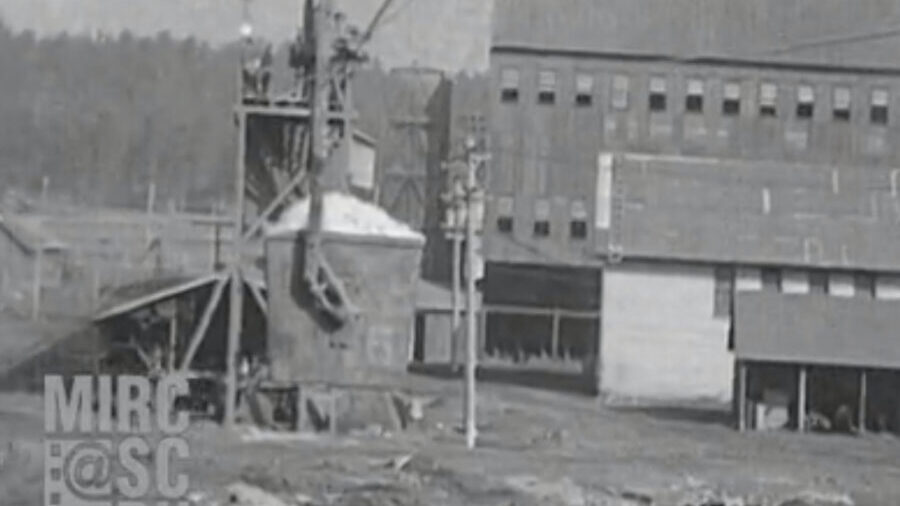
A forgotten seven-minute film shot in Chewelah, Wash. in 1925 reveals the Evergreen State's role in supplying the nation with magnesite, a vital wartime mineral for defense production in both World Wars. (Courtesy Moving Image Research Collections (MIRC)/University of South Carolina)
(Courtesy Moving Image Research Collections (MIRC)
A seven-minute black and white film, shot nearly a century ago in the Eastern Washington community of Chewelah, has been tucked away in an archive in South Carolina for nearly 50 years. The story behind the flickering forgotten footage illuminates the Evergreen State’s long-ago role in providing vital material for defense production during both World Wars.
Many history buffs know about Boeing bombers from Seattle and minesweepers built in Houghton for World War II, and they even know about the spruce forests of the Olympic Peninsula that provided crucial lumber for aircraft in World War I. But many of those same history buffs have likely never heard of magnesite or its role in wartime production in the United States.
Magnesite is magnesium carbonate, and it was once a critical ingredient in the steel-milling process. Heat-proof bricks made from magnesite lined the big forges in steel plants for much of the first half of the 20th century, and steel was used in just about every piece of equipment manufactured for the war efforts.
The old film that reveals much about Washington’s magnesite past is part of the Moving Image Research Collections (MIRC) at the University of South Carolina in Columbia, South Carolina. It was shot in 1925 by a Fox Movietone News photographer named Eric Mayell, who was based in Seattle and roaming the Pacific Northwest, movie camera in hand, for much of the 1920s.
What the film shows is a sprawling mining and refining operation for magnesite near the town of Chewelah, which is about 45 miles north of Spokane on the way to Colville on US Highway 395.
More from Feliks Banel: Ancient tree discovered near Vancouver Island
In glorious black and white shots on large-format, 35-millimeter film are flickering images of crews dynamiting the landscape at a quarry in the hills, ore cars coming and going from a mine opening, railroad engines encircled in smoke and steam, and wooden sleds packed full of raw ore being dragged by horses. The coolest sequence documents an overhead tram that carried raw ore in buckets a distance of more than five miles from the quarry to the processing plant.
The tram looks like a ski lift – it was actually built by a Spokane engineering and mining equipment firm also known for their ski lifts, and photographer Mayell actually rides in one of the tram buckets for the entire route, filming along the way as a car passes underneath, and the shadow of the tram bucket can be seen darting along a meadow.
The quarry and plant were owned and operated by the Northwest Magnesite Company, a firm which long ago ceased operations. Fortunately, a call to the Walt Goodman Historical Museum in Chewelah led to lifelong Chewelah resident Geno Ludwig, a retired schoolteacher now in his seventies.
“We used to get all of our magnesite here in the United States from Austria,” Ludwig told KIRO Newsradio. “But when the First World War started, Austria, of course, cut off their supply of magnesite to the United States because we were on different sides of the war. So the nationwide hunt went on to find magnesite, and they found it in an area about seven miles southwest of Chewelah.”
The site near Chewelah is called Finch Quarry. When the supply from Austria was cut off, Finch Quarry was already known for its magnesite because it had been a source of a form of marble used for tombstones and flooring and marble deposits are often found in the same areas as ore-bearing magnesite.
Geno Ludwig explained the whole complex operation of refining the magnesite to purify the ore through a process, which also required coal, called “dead burning.”
“The crushed and washed rock was loaded into these buckets on the tram,” up at Finch Quarry, Ludwig said. “The tram went from up in the mountain, down the hill, and to the manufacturing plant,” a mile or south of Chewelah.
“They had rotary kilns that looked like the tubes you’d find in like paper towels,” Ludwig continued. “They’re long; they’re probably eight feet high, a couple hundred feet long, and they sloped downward.”
“That coal and magnesite were stuck in the top end,” Ludwig explained. “And as this rotary kiln slowly turned, the rock would slowly come downhill to the end.”
“And it got so hot in there, it was a white-hot,” Ludwig said.
Geno Ludwig isn’t a geologist, and he never worked at the plant in Chewelah. He knows all about it, though, because he has a personal connection.
“My dad was a ‘burner,’ which means that he ran the kilns,” Ludwig said. “And when we went to visit him, you could not look inside the kiln; otherwise, it would blind you. You had to use this real thick, a kind of a bluish purple glass to look through.”
“When you looked in there, you could just you can see how hot it was,” Ludwig said. The dead-burning process, according to online sources, reaches about 3,200 degrees Fahrenheit.
The final product at the plant in Chewelah was a kind of pellet that, once it cooled down, would get shipped by train to Pittsburgh, where they would use it to manufacture those special bricks.
All Over The Map: ‘Frasier’ wasn’t the first influential Seattle TV show
The magnesite plant made Chewelah boom from 1917 through the early 1920s and again during World War II, when as many as 800 people worked there. It was the kind of place that was in operation around the clock since the kilns took time to fire up (so it made sense to always keep them going).
Vintage newspaper reports say that approximately 50 tons of magnesite were produced by each kiln per day; Geno Ludwig said as many as seven kilns were in operation at the Chewelah plant in its heyday.
However, along with advances in pretty much every other industry, as the 20th century wore on, steel-making technology changed, too. By the late 1960s, the Chewelah plant was sold to a company in Texas, and the workforce dwindled to fewer than 200 employees.
One of those workers was Geno’s dad, Ray Ludwig. The elder Ludwig was still working at the plant in March 1968 when the bad news came: the operation would shut down for good that August.
“He was devastated,” Ludwig said. “I mean, the whole town kind of went into an economic depression.”
Ludwig says that his father wondered, “‘What am I going to do to get a job? How am I going to feed my family?'”
“It was really, really tough on everybody,” the younger Ludwig said. “Chewelah had a fairly decent population depending on the plant and how many workers were actually actively working, and then suddenly, when the plants shut down, and people had to leave, it put a stress on everything.
“The businesses weren’t making as much money, the school districts didn’t have as many kids,” Ludwig continued. “So, it was an economic disaster.”
But, Geno Ludwig says, the population rallied, and Chewelah did eventually bounce back in the 1970s and is still going strong today.
Ludwig – as well as a volunteer with the museum named Diane Evans – didn’t know the 1925 film existed. Once Ludwig had a chance to view it, KIRO Newsradio spoke with him once again, and he sounded thrilled.
“I’d never seen it before,” Ludwig said. “But it did pretty well show you the description of what I was talking about – the buckets and the tram lines, and how the ore was mined and all that other kind of stuff.”
Beloved and huge: Jantzen Beach Carousel gets a new home
As to why the MIRC preserved that film at the University of South Carolina, archivist Benjamin Singleton explains that back in 1980, the Fox Corporation donated something like 16 million feet of “outtakes” from newsreel footage created by their shooters from 1919 to the 1940s.
Fox shooters worked all over the world, and Eric Mayell, the Seattle-based photographer who shot the footage in Chewelah, would likely have put the undeveloped film on a train to rush it back to New York City, Singleton says.
“The next day or so, the film would show up at Fox in Manhattan,” Singleton told KIRO Newsradio. “And they would develop it and kind of reel through it real quick. And if they thought it was interesting, they would cut out some pieces of the negative and form kind of a newsreel.”
The Fox newsreel was “about 10 minutes long, and they turned that out twice a week,” Singleton said. “And how they got it out to all the movie theaters across the nation was a miracle.”
Singleton explained what it means when he says that the footage of Chewelah is “outtakes” – that is, if any footage of Chewelah were used in a finished newsreel, that footage would no longer be included in the outtake footage. It’s unclear if any Chewelah footage was included in a newsreel in 1925 or if the outtakes represent all that was shot there. Singleton says the Chewelah film was first made available online back in 2005 and that it’s never been licensed for any documentary production.
The reason that all the Fox footage went to South Carolina and not to a larger institution such as the National Archives or the Library of Congress is unknown, but Singleton has a theory. He thinks it’s all because of a public TV show called “Lowell Thomas Remembers,” which was produced in Columbia, South Carolina, in the late 1970s.
“And Lowell Thomas, the famous Fox News voice, sits at a desk, and he says, ‘I remember, you know, Lindbergh blah blah, blah,'” Singleton said, doing his best impersonation of the laconic newsman. “That show was made here at the PBS station, which is one of the larger PBS stations, so it was the biggest single user and licensor of Fox News footage” – which is perhaps why all that footage was donated to an institution also located in Columbia, South Carolina, Singleton says.
Whatever the reason, Benjamin Singleton agrees that collections like the one he manages are part of what made it possible for guys like Ken Burns to reinvigorate the whole field of historic documentaries over the past several decades.
“That’s right,” Singleton said, chuckling about the filmmaker he has worked with many times. “He certainly owes me, and you can quote me.”
“I’m just playing,” Singleton said. “He’s nice, though.”
Meanwhile, in Chewelah, some of the old buildings from the plant are still standing along Highway 395, as well as a giant smokestack. It’s a different story at the old Finch Quarry.
“Up at the quarry, there’s nothing left; everything has been taken down,” Geno Ludwig said. “All of the tram has been taken down,” Ludwig continued. “The tram towers are gone, all the buckets are gone, (though on the ground in places) there’s a lot of tram wire up there where they had to replace the cables.”
As for the magnesite that once proved so vital to American defense, Ludwig says that if you know where to look, you still might find some along the route of the old tram.
“There are piles of rocks out there where a bucket would go over the top of the tower” and jostle a bit “and kind of spill rock down on the ground,” Ludwig said.
You can hear Feliks every Wednesday and Friday morning on Seattle’s Morning News with Dave Ross and Colleen O’Brien, read more from him here, and subscribe to The Resident Historian Podcast here. If you have a story idea, please email Feliks here.


